This article was medically reviewed by Erik Kramer, DO, MPH. Dr. Erik Kramer is a Board-Certified Primary Care Physician at the University of Colorado. With over 15 years of experience, his clinical interests include obesity and weight management, diabetes care, and preventive care, as well as embracing a holistic approach to primary care. He received his Doctorate in Osteopathic Medicine (D.O.) from the Touro University Nevada College of Osteopathic Medicine and completed his residency at Central Maine Medical Center. Dr. Kramer is a Diplomate of the American Board of Obesity Medicine.
There are 11 references cited in this article, which can be found at the bottom of the page.
This article has been viewed 58,861 times.
Mercury, like other heavy metals, can get in the bloodstream and cause kidney, liver, and abdominal problems, as well as posing substantial risks to pregnant mothers and developing fetuses. Mercury is most toxic when it’s inhaled, which happens most often in industrial settings.[1] You can also ingest mercury through consuming mercury-rich fish. Reducing mercury level is usually a task best left to doctors, but there are also a few lifestyle and dietary changes that you can make that may help to remove mercury from your body over time.
Steps
Reducing Mercury through Chelation Therapy
-
1Make a doctor’s appointment to have your mercury levels tested. Your doctor can run a blood or urine test to check the mercury levels in your body. Make an appointment to see your general practitioner, and explain that you’d like them to perform a blood or urine test to check your mercury levels.[2]
- A mercury blood level test is more appropriate for checking someone after a suspected acute exposure to mercury, while a 24-hour urine mercury level test is better for checking someone for low-grade or long-term exposure to mercury, such as from mercury exposure on the job.
- Mercury serves no role in the human body, so technically there shouldn't be any mercury in your bloodstream. However, studies have shown that amounts of mercury greater than 85 micrograms per liter (µg/L) pose harm.[3]
- You can get home tests for mercury, but it is recommended that you undergo professional medical testing if you have serious concerns about poisoning.
-
2Tell your doctor if you have any symptoms of mercury poisoning. People who work in industrial settings or who have been tasked with cleaning up mercury spills have the highest risk of coming down with mercury poisoning. If you suspect that you may have been inhaling mercury and have noted some problematic symptoms, describe them to your doctor. Common symptoms that emerge shortly after contracting mercury poisoning include:[4]
- Vomiting and nausea
- Shaky hands
- Stomach cramps and diarrhea
- Tightness in your chest and coughing
Advertisement -
3Undergo chelation therapy if your mercury levels are dangerously high. Chelation therapy is the primary form of medical treatment used to remove mercury (and other heavy metals) from the body.[5] This may be indicated if your mercury level from a blood or 24-hour urine test is above 100 mcg/L or if you are showing symptoms of mercury poisoning. During chelation therapy, your doctor will give you drugs that bind to the mercury in your bloodstream and allow your body to pass the mercury out through urine.[6]
- Some of the medications are taken via oral capsule, and others are injected intravenously. The most common chelation treatment is with a synthetic amino acid injection.
- Drugs that have been medically approved for use in chelation therapy in the U.S. include dimercaprol (BAL), succimer, deferoxamine, edetate calcium disodium, and penicillamine.
-
4Discuss chelation’s side effects with your doctor before treatment. If you have seriously high levels of mercury in your body, your doctor may advise that you receive a high dosage of chelating drugs. Some of these drugs can have serious and unpleasant side effects. If you’re going to be receiving a heavy dosage of a chelating drug, talk with your doctor and make sure you’re willing to experience the side effects.[7]
- Side effects of, for example, the drug deferoxamine include lung injuries or infections and very low blood pressure.
- If you’re concerned about the side effects, ask your doctor if they can prescribe you one of the milder chelating drugs or see if they can start you off on a lower dosage.
- Chelation therapy is the only medical method to counteract mercury poisoning. Although some of the side effects may seem severe, they are much better than living with mercury poisoning!
Changing Your Diet and Lifestyle
-
1Add 1/4 cup of cilantro to your daily meals. Cilantro is known to have many health benefits, and you can gain these benefits by eating as little as 1/4 cup (4 g) of it each day.[8] Specifically, studies have shown that cilantro speeds up the rate at which your body excretes mercury.[9] You can buy cilantro from your local grocery store, or grow fresh cilantro at home.
- Cilantro will clear the mercury out of your body very slowly. For the herb to have any sizeable effect, you’ll need to eat it regularly over a period of several weeks.
- Take a large bunch of cilantro and make it into a pesto with garlic and olive oil. Or, toss cilantro with pasta and eat it for lunch or dinner. Cilantro also goes well with a wide variety of Mexican dishes.
Warning: If you have experienced acute or chronic mercury exposure, see a doctor right away for treatment. Do not try to self-treat with food or other home remedies. While these changes may be helpful, they will not remove mercury from your body in the way that management with medication and chelation therapy will.
-
2Try adding garlic to your meals to lower mercury levels over time. Fresh garlic may help your body process and pass mercury more quickly than it would otherwise. Purchase garlic cloves from a local supermarket, or try growing your own at home. You can incorporate garlic into many savory dishes like salsa, soups and stews, eggs, and pasta. If you're using raw garlic, incorporate at least 2-3 cloves per day into your meals.[10]
- If you're taking garlic supplements, aim to consume between 600 to 1,200 mg per day.
- Studies have indicated that garlic is successful at removing mercury toxicity from rats. However, it has not been conclusively shown that garlic has much of an effect on mercury levels in the human body.
-
3Incorporate vitamin E into your diet to help your body process mercury. Vitamin E helps protect your body from mercury toxicity and may also help your body get rid of mercury. Vitamin E occurs naturally in many foods, including sunflowers, broccoli, kale, kiwi, mangos, tomatoes, and almonds. Add these foods to your diet to help your body process and excrete mercury.[11]
- You can also purchase vitamin E supplements in pill form. These are widely sold at health-food stores or in homeopathic medicine departments.
- Adults ages 18 and up shouldn’t consume more than 800–1,000 mg of vitamin E daily.
-
4Avoid eating large, mercury-rich species of fish and shark. Generally, the larger the seafood is, the greater the risk of it having ingested mercury will be. Types of fish and seafood that are notoriously high in mercury include shark, king mackerel, swordfish, and tilefish. Thanks to water pollution from industrial plants, these large fish absorb mercury from the water they live in for the majority of their lives. To avoid ingesting the mercury, cut large fish out of your diet.[12]
- As a rough rule of thumb, only eat fish that are small enough to fit into your skillet. These fish typically haven’t lived more than a year or 2, and won’t have had time to absorb much mercury.
-
5Eat Alaskan salmon and herring if you want fish in your diet. Many people enjoy eating fish and are hesitant to completely cut it from their diet. In this case, try to only eat species of fish that are low in mercury. Wild Alaskan salmon is a great option, as is herring and black cod (also known as sablefish). Sardines are also mercury-free, although many people find the taste somewhat unpleasant.[13]
- Read the labels on the packaging your fish comes in at the grocery store. Look for fish that’s labeled “Mercury-free.”
References
- ↑ https://www.michigan.gov/documents/mdch_MercurySpillFactsheet_85689_7.pdf
- ↑ https://www.health.ny.gov/environmental/chemicals/mercury/docs/exposure_levels.htm
- ↑ https://www.cdc.gov/biomonitoring/Mercury_FactSheet.html
- ↑ https://www.michigan.gov/documents/mdch_MercurySpillFactsheet_85689_7.pdf
- ↑ https://www.poison.org/articles/2011-mar/chelation-therapy
- ↑ https://journals.sagepub.com/doi/pdf/10.4137/BCI.S3036
- ↑ https://www.poison.org/articles/2011-mar/chelation-therapy
- ↑ https://www.nihadc.com/library/detox-for-life-class-2-addit-resources/54-4-dosing-with-chlorella/file.html?accept_license=1
- ↑ https://www.ncbi.nlm.nih.gov/pmc/articles/PMC4055906/
- ↑ https://pubmed.ncbi.nlm.nih.gov/3268178/
- ↑ https://www.ncbi.nlm.nih.gov/pubmed/720304
- ↑ https://healthyeating.sfgate.com/foods-containing-mercury-3669.html
- ↑ https://healthyeating.sfgate.com/foods-containing-mercury-3669.html
- ↑ https://www.poison.org/articles/2010-dec/do-fillings-cause-mercury-poisoning
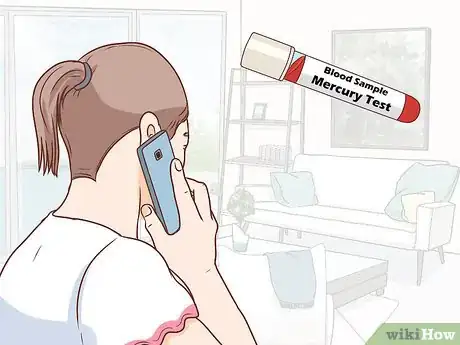




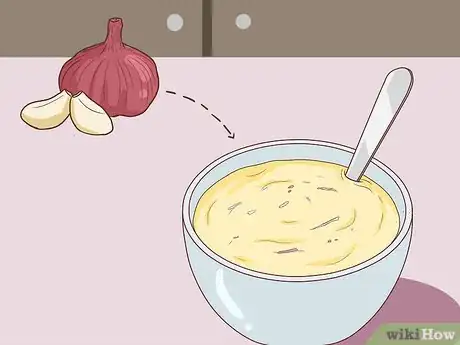
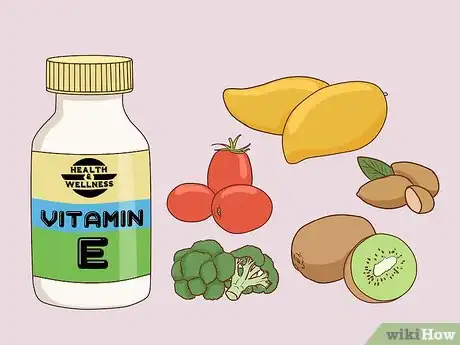


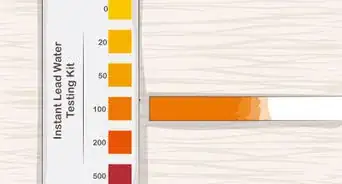

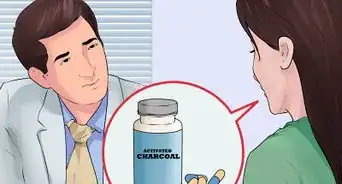




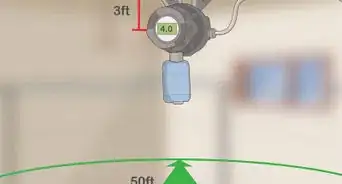















































Medical Disclaimer
The content of this article is not intended to be a substitute for professional medical advice, examination, diagnosis, or treatment. You should always contact your doctor or other qualified healthcare professional before starting, changing, or stopping any kind of health treatment.
Read More...